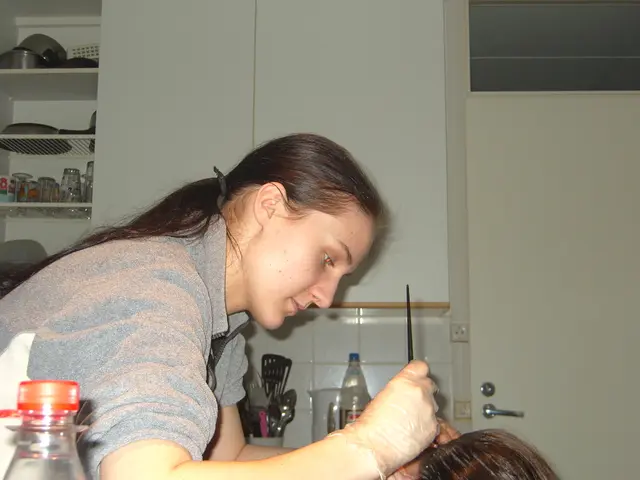Distinguishing age spots from skin cancer: Recognizing the variations to ensure proper assessment
Chillin' with Skin Spots: Decoding the Differences
As we grow older, our skin might display some unsightly marks that can resemble skin cancer. Yet, fear not! These small spots, otherwise known as age spots, are harmless and don't require treatment. Let's take a gander at the differences between these innocuous marks and the not-so-friendly skin cancer, and we'll even discuss a couple of similar issues that might catch you off guard.
Age Spots versus Skin Cancer
At first glance, age spots and skin cancer may seem alike. However, there are some distinctive features that can help you tell them apart.
Age Spots
These spots are flat, round or oval patches on your skin that range in color from light brown to black. You can usually find them on the areas of your body that receive a lot of sun exposure, such as your face, hands, shoulders, and chest. Age spots are evenly colored and have well-defined edges. They tend to darken with age and remain visible over time.
Skin Cancer
Unlike age spots, skin cancer can take on various appearances depending on its type. Here are the different types of skin cancer:
- Basal cell carcinoma: This type often looks like a small, pearly bump that can be red, pink, blue, or brown with raised edges or a lower center.
- Squamous cell carcinoma: This one might appear as a red or darkened scaly patch, a wart-like growth, or an open sore that doesn't heal.
- Melanoma: Remember the ABCDE rule? Asymmetry, border irregularity, color variation, diameter over 6mm, and evolving shape or color helped differentiate melanoma from benign spots. Melanoma can resemble age spots but may display irregularities such as asymmetry, blurred borders, multiple colors (black, brown, possibly red, white, or blue), and changes over time.
Potential Pitfall: Actinic Keratosis
Actinic keratosis is another type of skin condition that might be mistaken for an age spot. These rough, scaly patches can appear similar to age spots, but they're potentially precancerous. Keep an eye on any new or changing spots on your skin, and if you notice any signs of skin cancer, don't hesitate to consult your healthcare professional.
When to Seek Medical Advice
If a mark on your skin changes color, shape, size, or location, or if it seems different from other marks on your skin, it's best to consult a medical professional. Early detection is essential for effective treatment and improved health outcomes. Consider reaching out if a mark on your skin:
- changes in color, shape, size, or location
- looks different from other marks on your skin
- itches, crusts, scabs over, or bleeds and does not heal within 4 weeks
Diagnosis and Treatment
A doctor or dermatologist will examine age spots to determine whether they might be something other than an age spot. If there's any doubt, they may perform a skin biopsy to test for other conditions, such as skin cancer or actinic keratosis.
Treatment for age spots generally isn't necessary. However, some people may opt to have their appearance reduced through cosmetic procedures like topical lightening agents, chemical peels, laser therapy, or cryotherapy.
If you do discover skin cancer, treatment will depend on its type, stage, and other factors. Possible treatments include surgical excision, Mohs surgery, radiation, topical chemotherapy, immunotherapy, or systemic medication.
So, enjoy the sun, but remember to keep an eye on your skin. Early detection and knowledge are your best allies against these occasional unwanted guests! 🌞
- While age spots are harmless and appear as flat, round or oval, well-defined patches on sun-exposed areas, skin cancer variances significantly depending on its type, such as basal cell carcinoma, squamous cell carcinoma, or melanoma.
- Unlike age spots, melanoma, a type of skin cancer, might follow the ABCDE rule with irregularities like asymmetry, blurred borders, multiple colors, and changes over time, resembling age spots.
- Actinic keratosis, a potentially precancerous skin condition, can also mimic age spots, presenting as rough, scaly patches on sun-exposed areas.
- If a mark on your skin changes color, shape, size, or location, looks different from other marks, itches, crusts, scabs over, or bleeds and does not heal within 4 weeks, it's best to consult with a medical professional for early detection and effective treatment.
- While age spots generally don't require treatment, diagnosis and treatment for skin cancer depend on its type, stage, and other factors, with possible treatments including surgical excision, Mohs surgery, radiation, topical chemotherapy, immunotherapy, or systemic medication.








